Replace the computer disk, smartphone screen, battery, but also build small electronic devices and much more with the click of a button.
This is what ifu D1 promises, an electronic screwdriver that we have tried in recent days and that stands out for the selling price in relation to the capabilities offered and the twenty-two bits available.
Com ' it's done
First of all it is compact and handy. Cylindrical in shape, it is built entirely of polycarbonate and specifically is 16.5 cm long (tip excluded) and 1.5 cm thick, just enough to accommodate two AAA batteries for power supply (not included in the package).
On the external profile, at the right height and distance to allow easy control with the fingers, the two buttons with rubber cover are recessed that make the internal motor move in one direction or the other, i.e. allowing to screw or unscrew the screws in based on the need of the moment.
The outer surface is satin and pleasant to touch: there are no rubber reinforcements to improve grip when you hold it and that's okay because the motor force is not so high as to require a strong and firm grip.
The rotating end, to which the various tips are hooked, has an internal metal reinforcement and we imagine that the whole system is built in this material as it must withstand the continuous stresses caused by the strong tightening of the screws required in both directions.
It is also magnetic and this allows you to keep the tips that gradually alternate firmly in position and without requiring special coupling systems.
1 of 6 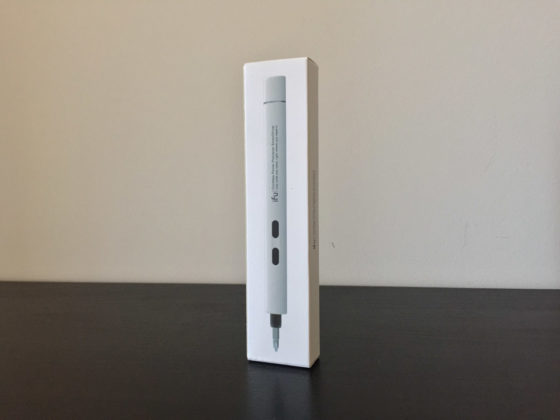
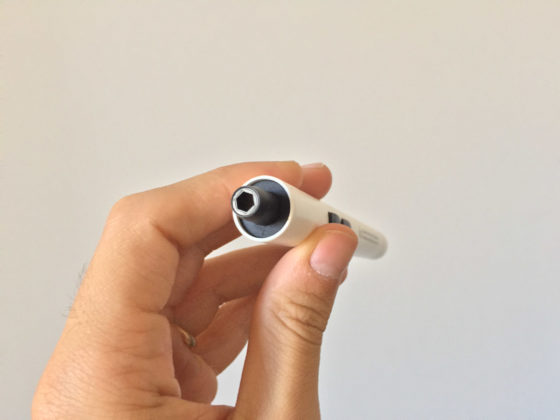
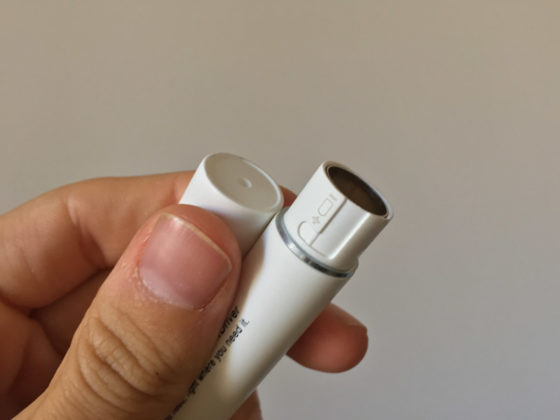
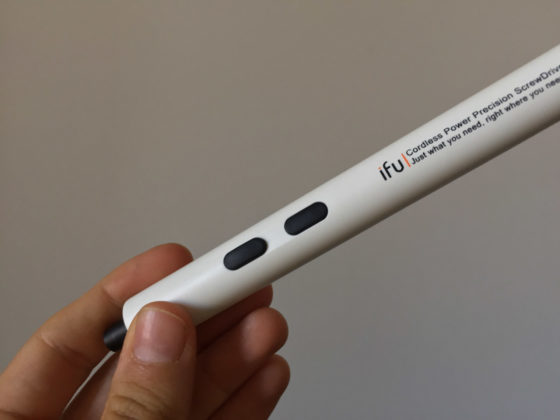
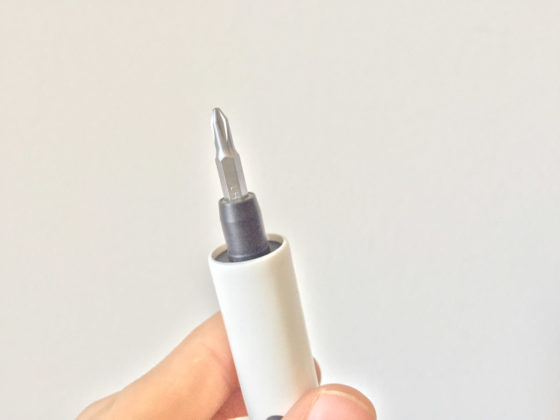
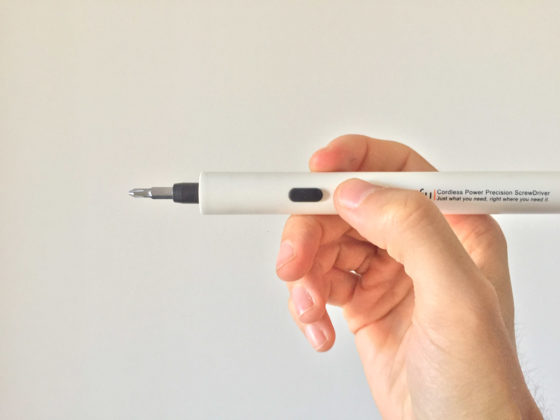
The tips
In the package there is another dark and semi-transparent polycarbonate cylinder, which collects all the tips provided. As we said there are 22, of which 18 magnetically locked to a plastic frame while the other 4 are hooked to a separate magnet in the second section of the cylindrical drill holder, called “Free” because its use is precisely free from others accessories. For example, you can also store the small screws of the devices disassembled from time to time in order to prevent them from being lost.
The frame to which the various tips are attached has several grooves that allow them to be separated and kept at the right distance to prevent them from overlapping each other during transport. It is a really practical system because it allows you to have an overview of all the available tips simply by rotating the cylinder in your hands.
As for the equipment, there are roughly the most used tips in electronic devices on the market: we go from the classic slotted and cross tips in various sizes to the star ones used for example by Apple on the iPhone. There is also one with a triangular tip, two hexagonal ones and one for removing very small hexagonal bolts or screws.
1 of 9 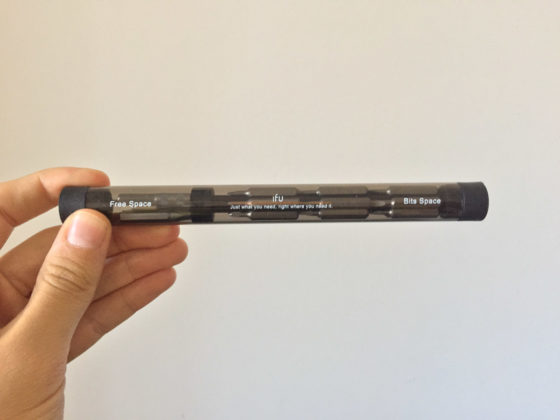
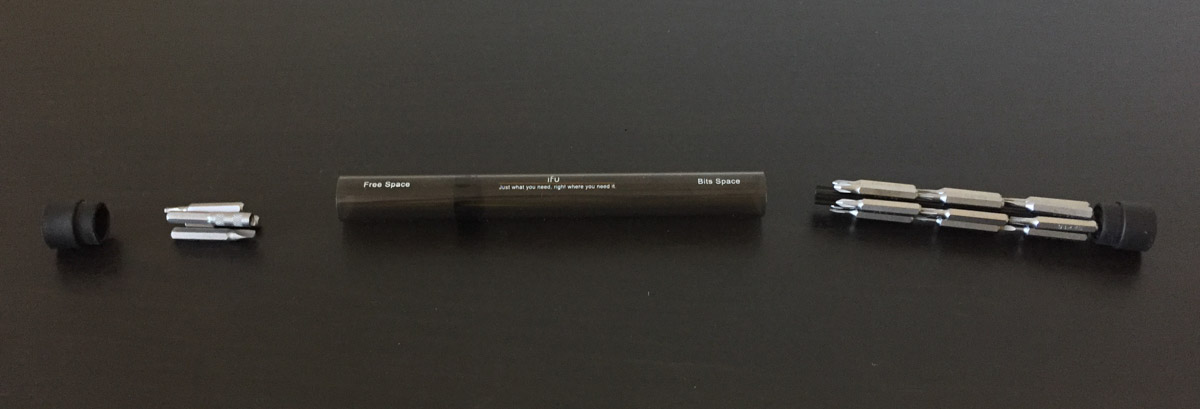
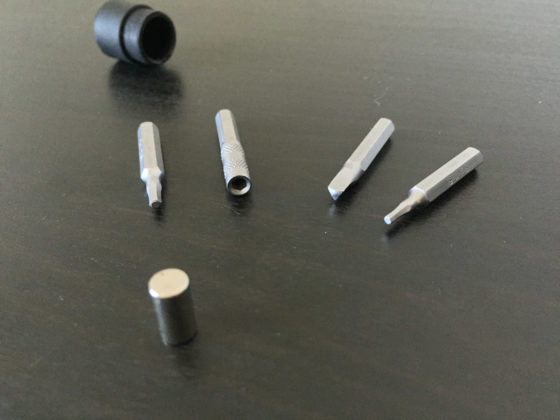
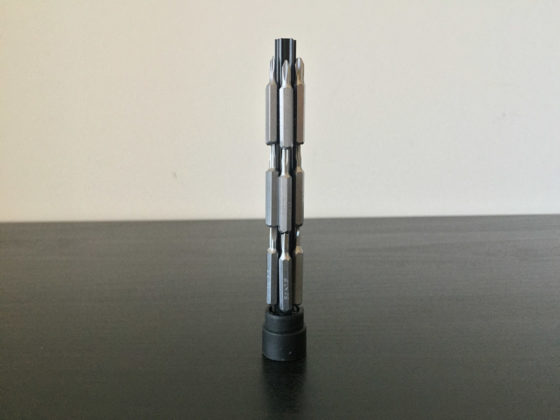
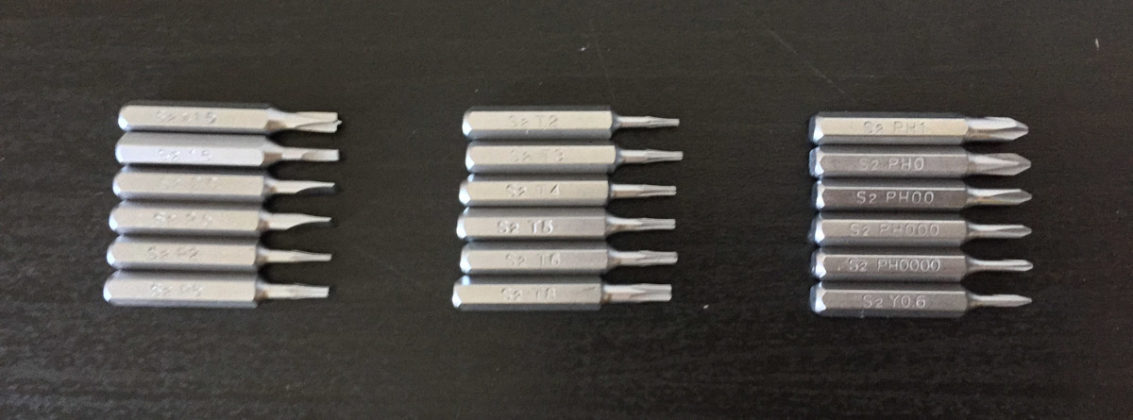
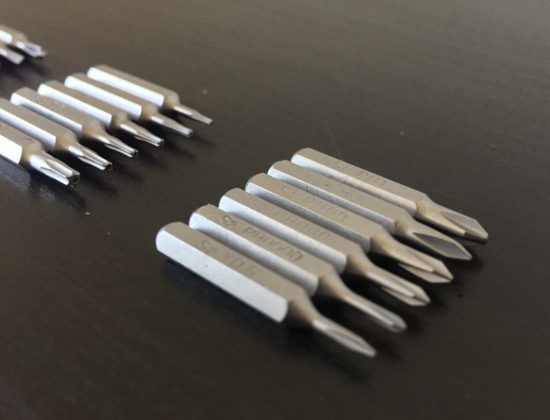
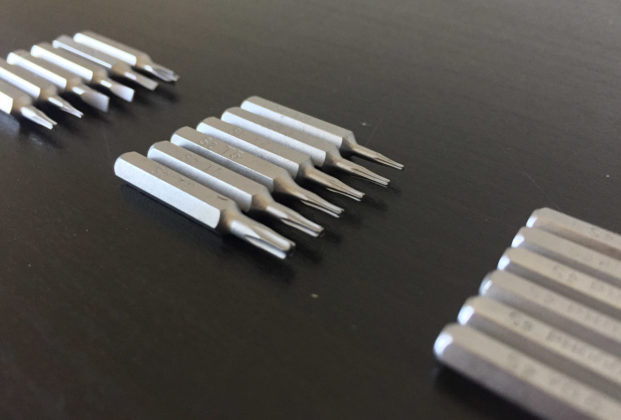
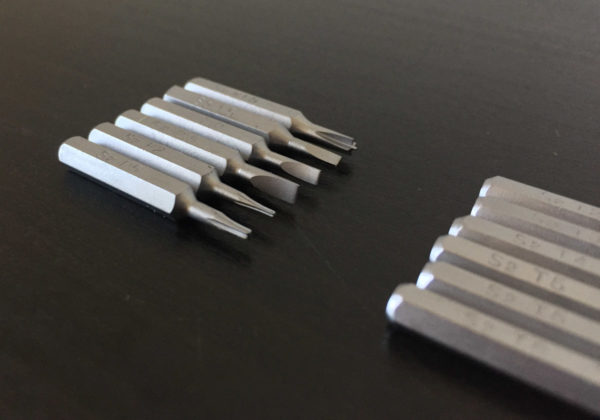

How is it going
To use it you need to insert the two AAA mini batteries with the positive pole towards the tip and the negative pole towards the exit. As we said, the whole structure is designed to accommodate the batteries millimetrically, perhaps too much since once inserted to remove them (because they are flat and must be replaced with new ones or because they are rechargeable and need to be recharged) the screwdriver will need to be shaken energetically, perhaps on a sofa, an armchair or the mattress of the bed to avoid that the impact with a harder surface can ruin them.
Fitting of the batteries aside, the screwdriver works really well: the rotation of the motor, controlled in one direction or the other through the prolonged pressure of the respective button, is fast enough to guarantee a quick removal or equally quick tightening of the screws.
It is able to maintain speed even at the end of the stroke and for this reason it is important to dose the rotation, perhaps with small taps, to avoid that excessive tightening can compromise the stability of the screws in the most fragile components.
However, the use of batteries is not mandatory: the screwdriver works very well even if you decide to turn it manually and, in this sense, perhaps the cylindrical shape is not among our favorites.
One or two slightly flattened sides, even better if they were all leveled like those of a classic pencil, they would have in fact offered better handling, clearly in the face of a body perhaps slightly more bulky but which in this case we would have been ready to welcome with open arms .
Finally, we would like to point out that usually the choice between a screwdriver and the other falls mainly on the quality of the tips. The cheaper ones tend to wear out before the others or lose their thread after a few uses: our tests stop at one or two tests on some electronic device at home so we cannot guarantee the duration over time of the tips supplied.
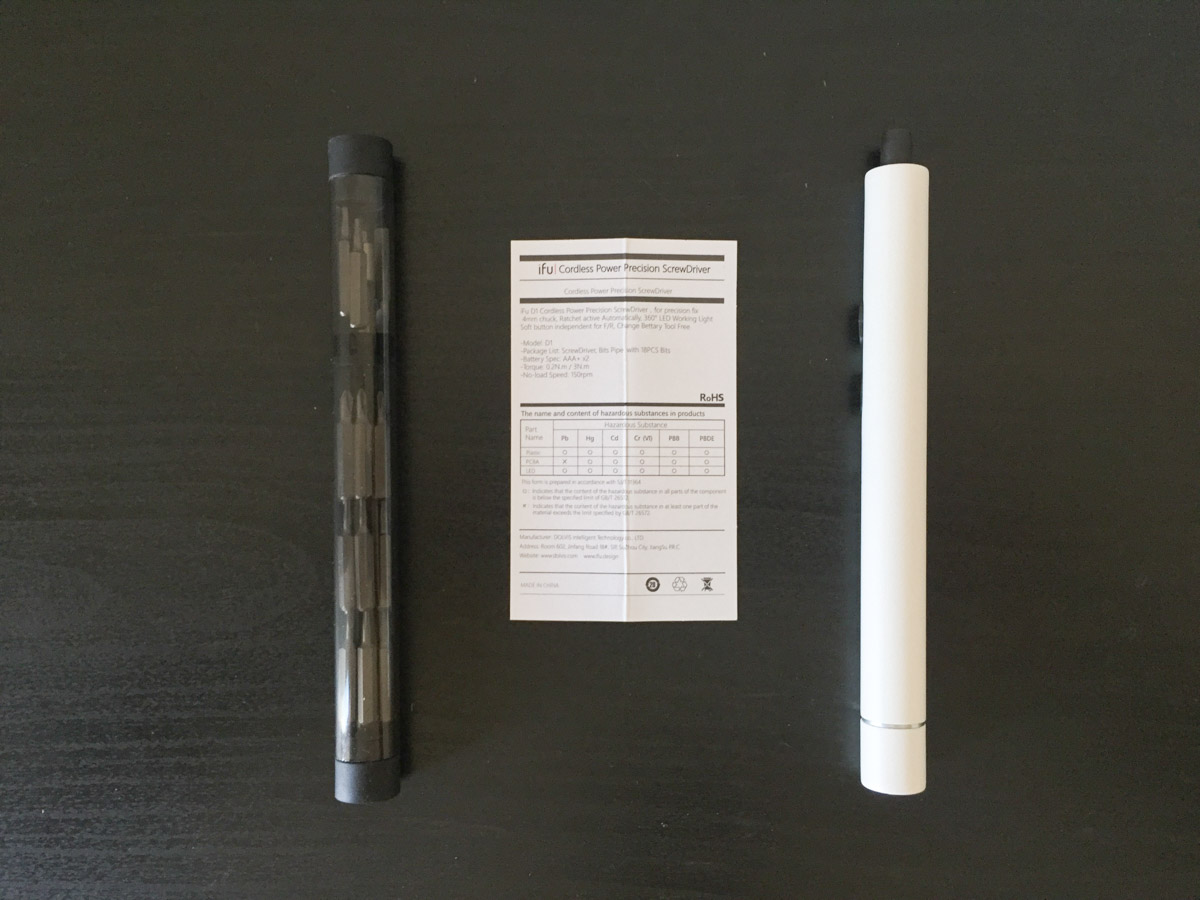
Conclusions
The use that can and must be done with this screwdriver is underlined by the size of the bits supplied, which never exceeds 2.5 mm. In fact, the power is not enough to allow you to remove or adequately tighten screws to larger objects such as an IKEA piece of furniture but also trunks or small chests, perhaps in wood, which use screws larger than those compatible with the tips that found in the package.
The use of this screwdriver is in fact mainly indicated for those who repair small electronic devices such as smartphones, tablets, computers or similar.
Retail price
The price, however, is really negligible and it is a recommended purchase even for those who need to customize or adjust one or two devices a year: at the time of writing it costs in fact only 16.29 euros , much less than what you would spend to buy even just two or three of the traditional screwdrivers normally used in this sector and with the advantage of having a motorized screwdriver available and with 22 different bits available.
The offer is valid while stocks last; for more information on shipping costs and times, any charges and order management, you can consult the seller's website.





